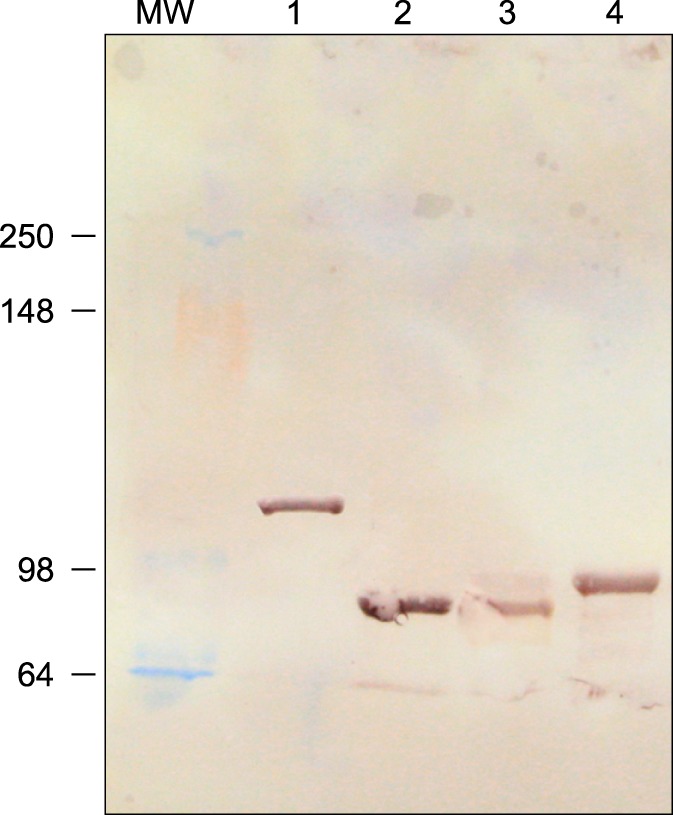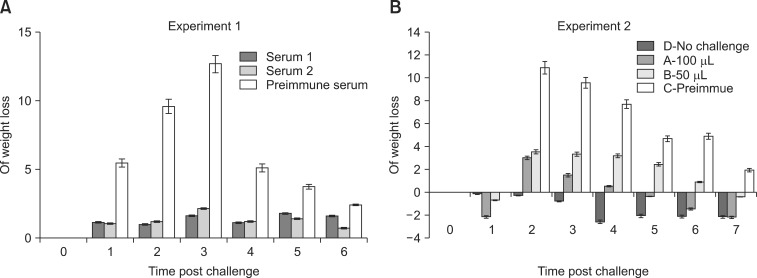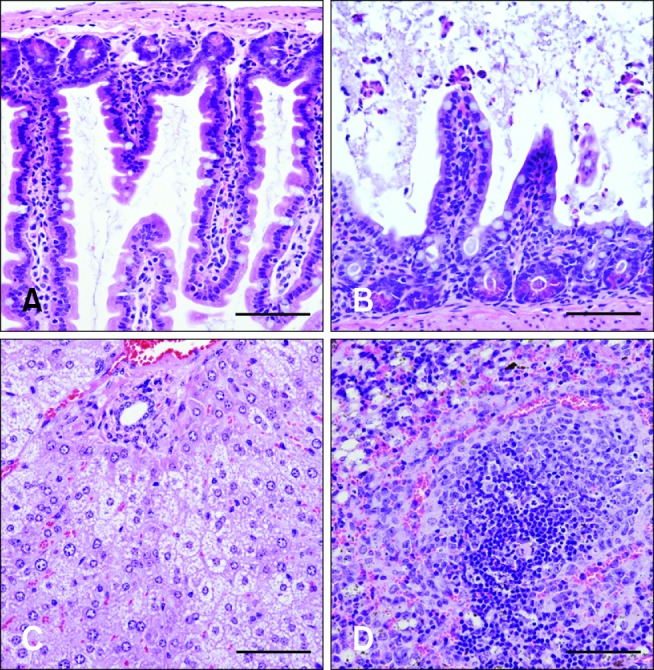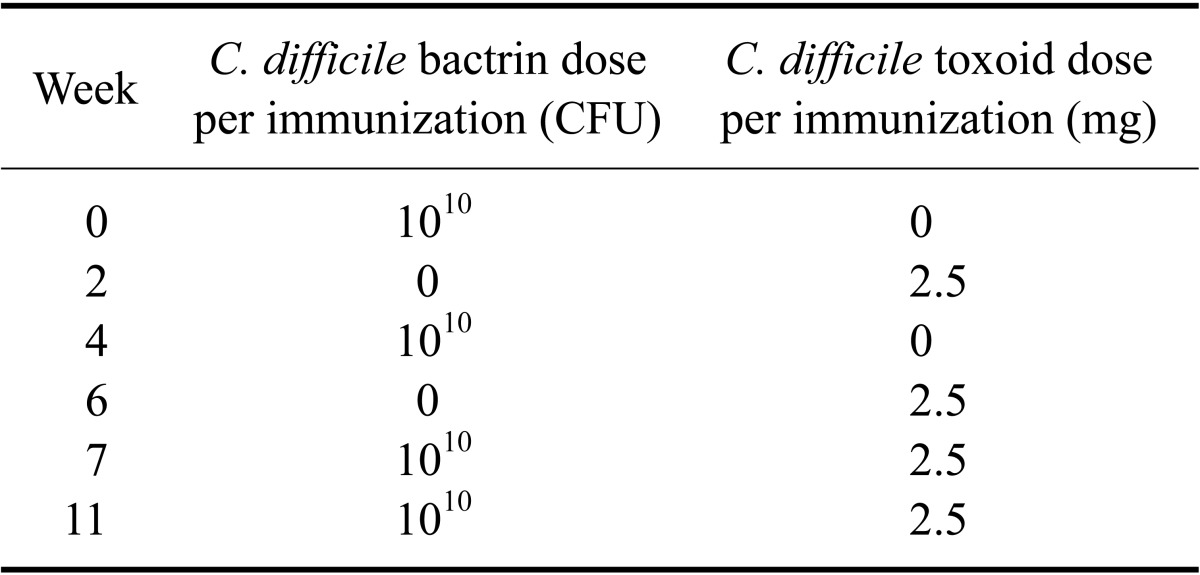1. Ananthakrishnan AN.
Clostridium difficile infection: epidemiology, risk factors and management. Nat Rev Gastroenterol Hepatol. 2011; 8:17–26. PMID:
21119612.
2. Arroyo LG, Staempfli H, Weese JS. Molecular analysis of
Clostridium difficile isolates recovered from horses with diarrhea. Vet Microbiol. 2007; 120:179–183. PMID:
17112686.
3. Artiushin S, Timoney JF, Fettinger M, Fallon L, Rathgeber R. Immunisation of mares with binding domains of toxins A and B of
Clostridium difficile elicits serum and colostral antibodies that block toxin binding. Equine Vet J. 2013; 45:476–480. PMID:
23206274.
4. Bartlett JG. Clinical practice. Antibiotic-associated diarrhea. N Engl J Med. 2002; 346:334–339. PMID:
11821511.
5. Båverud V.
Clostridium difficile diarrhea: infection control in horses. Vet Clin North Am Equine Pract. 2004; 20:615–630. PMID:
15519822.
6. Båverud V, Franklin A, Gunnarsson A, Gustafsson A, Hellander-Edman A.
Clostridium difficile associated with acute colitis in mares when their foals are treated with erythromycin and rifampicin for
Rhodococcus equi pneumonia. Equine Vet J. 1998; 30:482–488. PMID:
9844966.
7. Carman RJ, Stevens AL, Lyerly MW, Hiltonsmith MF, Stiles BG, Wilkins TD.
Clostridium difficile binary toxin (CDT) and diarrhea. Anaerobe. 2011; 17:161–165. PMID:
21376825.
8. Chen X, Katchar K, Goldsmith JD, Nanthakumar N, Cheknis A, Gerding DN, Kelly CP. A mouse model of
Clostridium difficile-associated disease. Gastroenterology. 2008; 135:1984–1992. PMID:
18848941.
9. Corthier G, Muller MC, Wilkins TD, Lyerly D, L'Haridon R. Protection against experimental pseudomembranous colitis in gnotobiotic mice by use of monoclonal antibodies against
Clostridium difficile toxin A. Infect Immun. 1991; 59:1192–1195. PMID:
1900059.
10. Ehrich M, Van Tassell RL, Libby JM, Wilkins TD. Production of
Clostridium difficile antitoxin. Infect Immun. 1980; 28:1041–1043. PMID:
7399686.
11. Foglia G, Shah S, Luxemburger C, Pietrobon PJ.
Clostridium difficile: development of a novel candidate vaccine. Vaccine. 2012; 30:4307–4309. PMID:
22682287.
12. Forbes G, Church S, Savage CJ, Bailey SR. Effects of hyperimmune equine plasma on clinical and cellular responses in a low-dose endotoxaemia model in horses. Res Vet Sci. 2012; 92:40–44. PMID:
21093001.

13. Gardiner DF, Rosenberg T, Zaharatos J, Franco D, Ho DD. A DNA vaccine targeting the receptor-binding domain of
Clostridium difficile toxin A. Vaccine. 2009; 27:3598–3604. PMID:
19464540.
14. Giannasca PJ, Zhang ZX, Lei WD, Boden JA, Giel MA, Monath TP, Thomas WD Jr. Serum antitoxin antibodies mediate systemic and mucosal protection from
Clostridium difficile disease in hamsters. Infect Immun. 1999; 67:527–538. PMID:
9916055.
15. Giguère S, Gaskin JM, Miller C, Bowman JL. Evaluation of a commercially available hyperimmune plasma product for prevention of naturally acquired pneumonia caused by
Rhodococcus equi in foals. J Am Vet Med Assoc. 2002; 220:59–63. PMID:
12680449.
16. Greenberg RN, Marbury TC, Foglia G, Warny M. Phase I dose finding studies of an adjuvanted
Clostridium difficile toxoid vaccine. Vaccine. 2012; 30:2245–2249. PMID:
22306375.
17. Johnson S, Gerding DN, Janoff EN. Systemic and mucosal antibody responses to toxin A in patients infected with
Clostridium difficile. J Infect Dis. 1992; 166:1287–1294. PMID:
1431247.
18. Keessen EC, Gaastra W, Lipman LJ.
Clostridium difficile infection in humans and animals, differences and similarities. Vet Microbiol. 2011; 153:205–217. PMID:
21530110.
19. Kelly CP, Pothoulakis C, Vavva F, Castagliuolo I, Bostwick EF, O'Keane JC, Keates S, LaMont JT. Anti-
Clostridium difficile bovine immunoglobulin concentrate inhibits cytotoxicity and enterotoxicity of
C. difficile toxins. Antimicrob Agents Chemother. 1996; 40:373–379. PMID:
8834883.
20. Kink JA, Williams JA. Antibodies to recombinant
Clostridium difficile toxins A and B are an effective treatment and prevent relapse of
C. difficile-associated disease in a hamster model of infection. Infect Immun. 1998; 66:2018–2025. PMID:
9573084.
21. Kuehne SA, Cartman ST, Heap JT, Kelly ML, Cockayne A, Minton NP. The role of toxin A and toxin B in
Clostridium difficile infection. Nature. 2010; 467:711–713. PMID:
20844489.
22. Kyne L, Warny M, Qamar A, Kelly CP. Asymptomatic carriage of
Clostridium difficile and serum levels of IgG antibody against toxin A. N Engl J Med. 2000; 342:390–397. PMID:
10666429.
23. Leav BA, Blair B, Leney M, Knauber M, Reilly C, Lowy I, Gerding DN, Kelly CP, Katchar K, Baxter R, Ambrosino D, Molrine D. Serum anti-toxin B antibody correlates with protection from recurrent
Clostridium difficile infection (CDI). Vaccine. 2010; 28:965–969. PMID:
19941990.
24. Lyerly DM, Bostwick EF, Binion SB, Wilkins TD. Passive immunization of hamsters against disease caused by
Clostridium difficile by use of bovine immunoglobulin G concentrate. Infect Immun. 1991; 59:2215–2218. PMID:
2037383.
25. McFarland LV. Alternative treatments for
Clostridium difficile disease: what really works? J Med Microbiol. 2005; 54:101–111. PMID:
15673502.
26. Mulligan ME, Miller SD, McFarland LV, Fung HC, Kwok RY. Elevated levels of serum immunoglobulins in asymptomatic carriers of
Clostridium difficile. Clin Infect Dis. 1993; 16(Suppl 4):S239–S244. PMID:
8324125.
27. O'Brien JB, McCabe MS, Athié-Morales V, McDonald GS, Ní Eidhin DB, Kelleher DP. Passive immunisation of hamsters against
Clostridium difficile infection using antibodies to surface layer proteins. FEMS Microbiol Lett. 2005; 246:199–205. PMID:
15899406.
28. Oberli MA, Hecht ML, Bindschädler P, Adibekian A, Adam T, Seeberger PH. A possible oligosaccharide-conjugate vaccine candidate for
Clostridium difficile is antigenic and immunogenic. Chem Biol. 2011; 18:580–588. PMID:
21609839.
29. Ostrowski SR, Kubiski SV, Palmero J, Reilly CM, Higgins JK, Cook-Cronin S, Tawde SN, Crossley BM, Yant P, Cazarez R, Uzal FA. An outbreak of equine botulism type A associated with feeding grass clippings. J Vet Diagn Invest. 2012; 24:601–603. PMID:
22529134.

30. Peláez T, Alcalá L, Alonso R, Rodríguez-Créixems M, García-Lechuz JM, Bouza E. Reassessment of
Clostridium difficile susceptibility to metronidazole and vancomycin. Antimicrob Agents Chemother. 2002; 46:1647–1650. PMID:
12019070.
31. Roberts A, McGlashan J, Al-Abdulla I, Ling R, Denton H, Green S, Coxon R, Landon J, Shone C. Development and evaluation of an ovine antibody-based platform for treatment of
Clostridium difficile infection. Infect Immun. 2012; 80:875–882. PMID:
22144483.
32. Ruby R, Magdesian KG, Kass PH. Comparison of clinical, microbiologic, and clinicopathologic findings in horses positive and negative for
Clostridium difficile infection. J Am Vet Med Assoc. 2009; 234:777–784. PMID:
19284345.
33. Saito T, Kimura S, Tateda K, Mori N, Hosono N, Hayakawa K, Akasaka Y, Ishii T, Sumiyama Y, Kusachi S, Nagao J, Yamaguchi K. Evidence of intravenous immunoglobulin as a critical supportive therapy against
Clostridium difficile toxin-mediated lethality in mice. J Antimicrob Chemother. 2011; 66:1096–1099. PMID:
21393125.
34. Scaria J, Ponnala L, Janvilisri T, Yan W, Mueller LA, Chang YF. Analysis of ultra low genome conservation in
Clostridium difficile. PLoS One. 2010; 5:e15147. PMID:
21170335.
35. Sorg JA, Sonenshein AL. Bile salts and glycine as cogerminants for
Clostridium difficile spores. J Bacteriol. 2008; 190:2505–2512. PMID:
18245298.
36. Tillotson GS, Tillotson J.
Clostridium difficile-a moving target. F1000 Med Rep. 2011; 3:6. PMID:
21654927.
37. Torres JF, Lyerly DM, Hill JE, Monath TP. Evaluation of formalin-inactivated
Clostridium difficile vaccines administered by parenteral and mucosal routes of immunization in hamsters. Infect Immun. 1995; 63:4619–4627. PMID:
7591115.
38. van Dissel JT, de Groot N, Hensgens CM, Numan S, Kuijper EJ, Veldkamp P, van't Wout J. Bovine antibody-enriched whey to aid in the prevention of a relapse of
Clostridium difficile-associated diarrhoea: preclinical and preliminary clinical data. J Med Microbiol. 2005; 54:197–205. PMID:
15673517.
39. van Nispen Tot Pannerden CM, Verbon A, Kuipers EJ. Recurrent
Clostridium difficile infection: what are the treatment options? Drugs. 2011; 71:853–868. PMID:
21568363.
40. Yan W, Faisal SM, McDonough SP, Divers TJ, Barr SC, Chang CF, Pan MJ, Chang YF. Immunogenicity and protective efficacy of recombinant Leptospira immunoglobulin-like protein B (rLigB) in a hamster challenge model. Microbes Infect. 2009; 11:230–237. PMID:
19070678.










 PDF
PDF ePub
ePub Citation
Citation Print
Print



 XML Download
XML Download